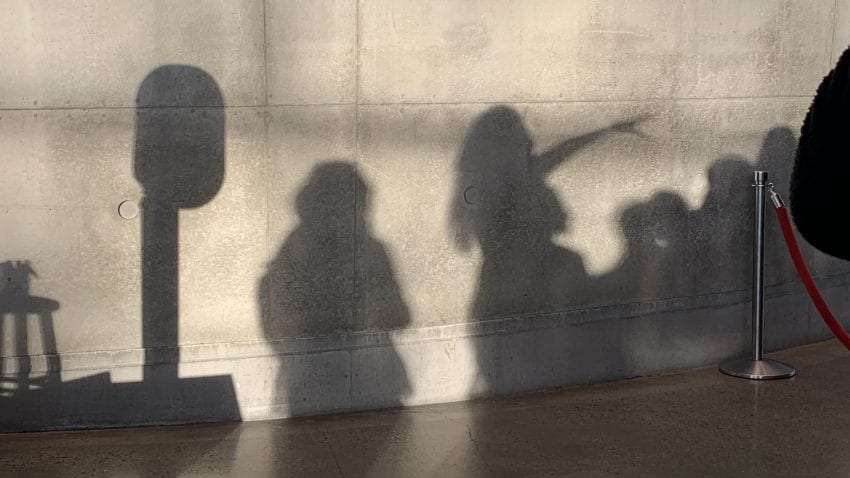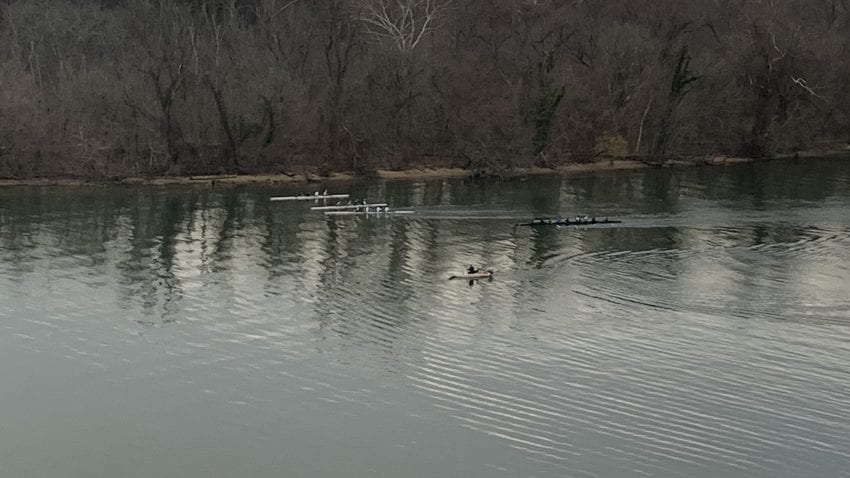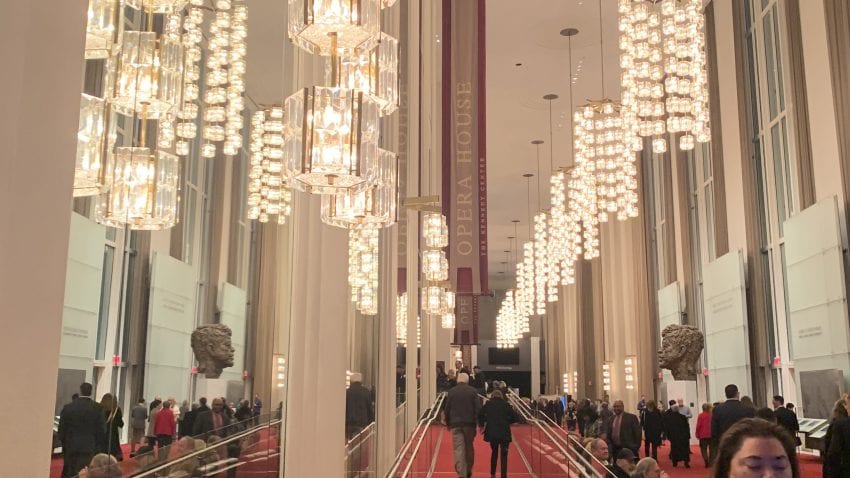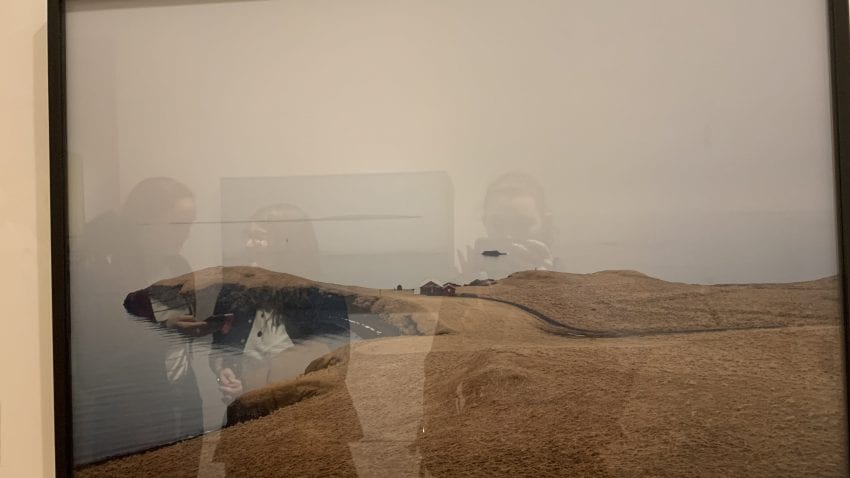*Note from the author: Because I’m cheesy and love a pun, this post is illustrated in six pictures I have taken of reflections, for fun and symbolic reasons.*
I. Does Art Matter?
I ended my first blog post wondering if the arts matter in the grand scheme of things. This is a question I have continued to ask myself everyday of this program, and I still don’t have a clear answer on. I don’t think that I could stand up and argue that the arts are more important at this point in time than climate change, gun control, or election reform. But maybe comparing the arts to those topics is setting the bar too high, and doesn’t give the arts a fighting chance. There is something about the fact that we have been meeting with people all month who are much smarter, more informed, more civically active than me that have made advocating for the arts their career. If nothing else, the testimonials of these people we have met has inspired me to try to understand the arts in a deeper way. There is something about the arts that makes us more human.
All this being said, I never would have thought I would be in a position to be doubting the arts. I count myself endlessly lucky to have been brought up in a family that encouraged participation in the arts, both through making us learn instruments, allowing us time and space to draw, paint, and work with other mediums, and in dragging me and my siblings to performances and museums since we were too young to remember. Music was always a part of our home, either my mother singing, us kids practicing, occasionally (but memorably) my dad playing his trumpet, or listening to all genres of music. We can always tell when my dad is going outside to fix things, do yard work, or grill because he starts blasting the band The Red Hot Chilli Pipers (not to be confused with the more famous rock band, the Red Hot Chili Peppers). The point is, art is important to me, and I’ve realized in the past month that it is important to other people as well.

Art reflected in art at the Phillip’s Collection.
II. Art is for Everyone
One of the questions that has come up in conversations all over this class has been: how do you get people who don’t usually engage with art to feel invited and welcomed into arts spaces? This question speaks to accessibility for people with all sorts of disabilities, to communities of differing socioeconomic backgrounds, to people from rural areas, to people who just weren’t raised around art. A lot of the time the answer to this question was “Yeah, that’s a great question!” Which to me means, “Yeah, we don’t know!” However, there were some organizations we met with that really changed the way I think about how organizations can reach out to communities, and that inspired me to want to make change in my own communities. Among those doing exemplary work were the Arena Stage Voices of Now program, District Community Playback, the Anacostia Arts Center, and the Halcyon Arts Lab. The community where I have lived for the past ten years is relatively devoid of an arts community, while the town half an hour away is a center for artists, and the town 45 minutes in the other direction has one of the most thriving arts ecosystems I can think of. All of this makes me want to try harder to engage the arts where I live, instead of just running to other arts rich communities which is what I have done in the past.

The shadow of our class at Arena Stage
III. A City Where People Have to Think
Just as my classmates and I were encouraged throughout this class to think about our own civic identity, the people we met who live in Washington, D.C. have to think about their own civic identity by virtue of living in the Nation’s capital. Not everyone we talked to during meetings or on our own time has come to the conclusion that being in D.C. makes them want to be more civically engaged; in fact some people found that living amidst politics made them less political. However, my experience being entrenched in the political culture of the city made me realize my own will to affect change, and my own responsibility to be involved in my community.

Trees reflected in the Potomac River with the Lincoln Memorial in the background. I took this picture from the roof of the Kennedy Center.
IV. The Kennedy Center: Taking Money from the Government and Giving Art to the People
The Kennedy Center is the organization we visited the most times over the month. We had a wonderful arts accessibility panel with their access team, and we went to three performances, one on each of the stages. The Kennedy Center is one of the organizations in DC the receives funding from the government in multiple capacities, and is dedicated to President John F. Kennedy. The Kennedy Center also provides free and accessible artistic programming for the community, both at the Millennium Stage and at The Reach. I’ve been inspired by the programs of the Kennedy Center to consider their connections between democracy and the arts by their founding principles and their locality to Washington, D.C.

The famous Kennedy bust reflected in the mirrors at the Kennedy Center.
V. Can’ Have Art without People, Can’t Have People without Art
Going into this class the most obvious connection between the arts and democracy that most of us thought of was funding. I think that having spent a month thinking about this specific connection, the most important part of it is people. People are the foundation of the ideal democratic system, people create art, people protect art.

Myself and two classmate reflected in the glass cover of a photograph at the Phillip’s Collection.
VI. What I’m Taking Away
On Saturday we went to see a wonderful production of playback theater by District Community Playback, at the Anacostia Arts Center. While the production was wonderful and inspiring in many ways, what I want to talk about here is a conversation I had after the performance. I went up to speak to one of the performers because during the talk back she revealed that she was retired Navy, which I have a personal connection to as my dad is retired Navy, but also because I’m writing my policy proposal for this class about art therapy for military veterans. The conversation I had with this woman was one of the best I have had with any person ever. Her name was Pamela, and from the very first moment I began speaking to her, I felt truly listened to, and every word she said was inspiring.
Her handshake (which I experienced three of four times throughout our conversation) had all the strength and vigor of the military, but also the passion of an artist. She knew what this class was about, and so she asked me what I have learned about art and democracy. Now by this point in the month this should be a question I have a canned answer to, but that wasn’t what came to my brain at that moment. I found in that exact moment, halfway through this conversation with a truly wonderful woman, my takeaway from all our combined experiences was “Hope.” I feel that what we have seen from federal level organizations and employees that, even though from the news it sounds like our government is falling into tyranny, the checks and balances that are the foundation of our system are working. Art is still being protected, and encouraged, even with next to no support from the President. I also said that I have more power, as an artist and aspiring arts advocate, than I ever could have realized. I knew coming into this that month that there are actions I can take on a local level to affect change, such as attending marches and protests, and that I could vote to influence the Federal Government. This month I have learned about and experienced new models for interacting with the Federal Government, both through individual action (talking or writing to representatives on various levels), and possible future careers in fields like lobbying, development, and grant giving. I feel more responsibility than ever to bring things that I know to other people, and to take my civic engagement to a new level.

The future might be bright, like the sun and blue sky reflecting in this window.
